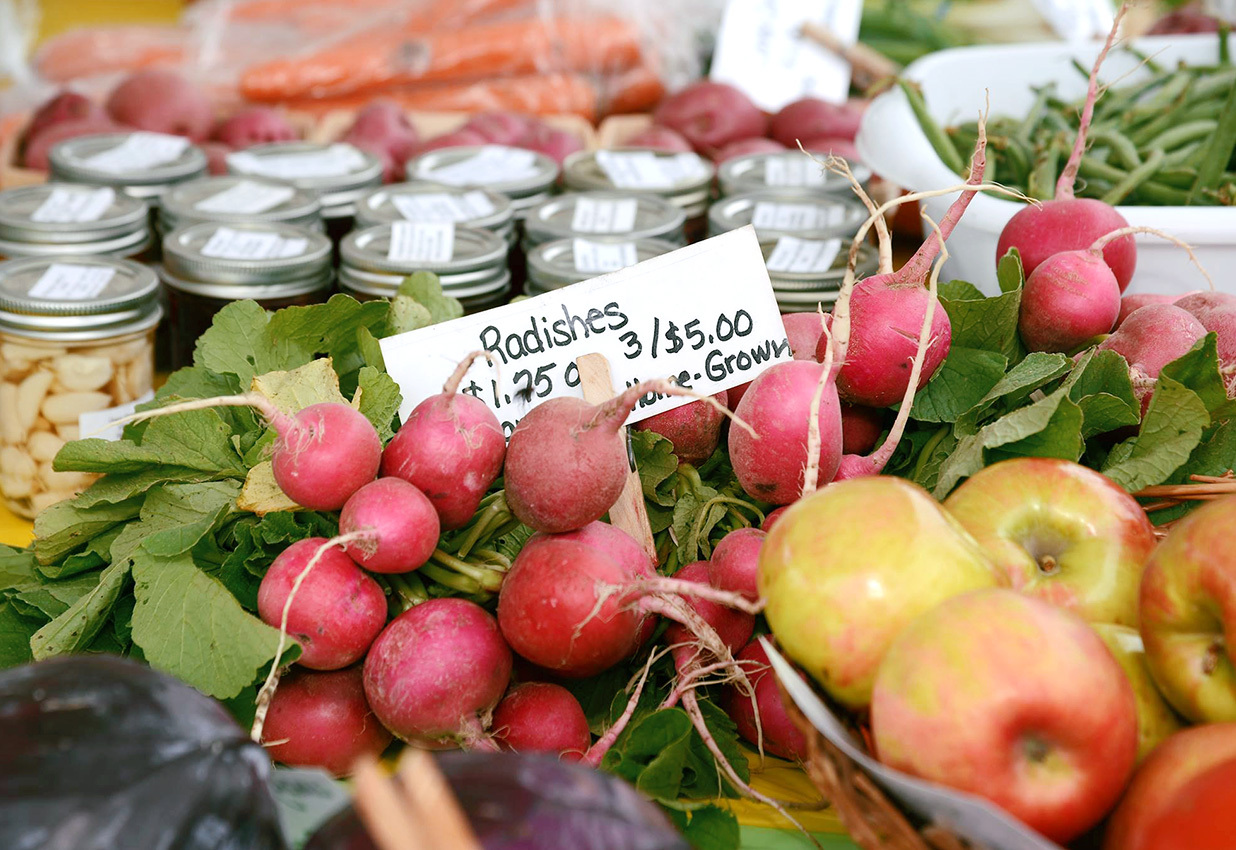
Reset the Table: Meeting the Moment to Transform the U.S. Food System
July 28, 2020
The Rockefeller Foundation recently released a report dismantling and proposing a rebuild of the current health and food system in the U.S. The article lays out a plan as to how we can help those in our communities and support local food producers, specifically in this time of the COVID-19 pandemic. Black, Indigenous, and people of color (BIPOC) have disproportionately experienced hardships in regards to health and unemployment because of the effects of COVID-19, as well as experienced an influx of nutrition insecurity.

Reset the Table: Meeting the Moment to Transform the U.S. Food System
July 28, 2020
The Rockefeller Foundation recently released a report dismantling and proposing a rebuild of the current health and food system in the U.S. The article lays out a plan as to how we can help those in our communities and support local food producers, specifically in this time of the COVID-19 pandemic. Black, Indigenous, and people of color (BIPOC) have disproportionately experienced hardships in regards to health and unemployment because of the effects of COVID-19, as well as experienced an influx of nutrition insecurity.
What COVID-19 has revealed
Poor health throughout the United States is a result of lack of access to healthy food, insufficient incomes to afford high-quality diets, and targeted marketing of unhealthy food. The Rockefeller Foundation reported that, “in 16.5% of households with children, parents are directly reporting that their children are not getting enough food—meaning that nearly 14 million children are going hungry on a regular basis.” While simultaneously, 75% of American adults are now either overweight or obese, and nearly half suffer from diabetes or pre-diabetes. Poor nutrition causes more than half a million deaths each year, with a disproportionate impact on Indigenous people, people of color, and low-income people in both urban and rural communities. The high rates of both hunger and obesity has resulted in a very concerning paradox within our county, a situation that has only been exacerbated through the pandemic.
An opportunity
The article introduces the idea of “food is medicine” which uses nutrition as a way to help treat medical needs. The article states, “There is increased interest within the health care sector and among communities for greater integration of “food is medicine” interventions, such as medically tailored meals and produce prescriptions, with the aim to nourish people in order to strengthen us against disease, be it respiratory or metabolic.” With the help of the 2018 Farm Bill, $50 million per year was issued to support programs that help low-income consumers access and purchase fresh fruits and vegetables, including SNAP incentives and prescriptions for fresh produce to families. Accessibility to healthier and more nutrient dense foods can reduce the risk of illness.
Fundamental change needed in the U.S. food system
This article proposes three key ways to shift the food system within the United States. While COVID-19 and the resulting economic downturn exacerbated the consequences of the current system, it did not create them and its end will not solve them. The pandemic has opened up the topic of making those necessary changes that have been long needed. The risks to public health, the strength of our economy, equity and social justice, and even our national security demand it.
- Create an integrated nutrition system. With the current system many families cannot simply rely on just one public nutrition program, many are needed to provide enough food to members in each family. There are 3 immediate actions they propose within this shift:
- Strengthen nutrition benefit programs to ensure children and families are fed.
- Invest public and private funding in school food programs as anchors of community feeding.
- Expand the idea that ‘Food is Medicine’.
- Reinvigorate regional systems as a part of a better-balanced, more sustainable, and more resilient nationwide food chain. While working toward this shift, there are immediate actions needed:
- Ensure relief and stimulus policies improve the resilience of supply chains and strengthen local systems.
- Direct the purchasing power of large institutions along a values-based (equitable, ethical, sustainable) supply chain.
- Invest in equity and shared prosperity. The immediate actions needed are:
- OSHA must set and enforce mandatory guidelines.
- Provide credit, loan servicing, and debt relief for farmers and ranchers.
- Increase prosperity of farmers, ranchers, and fishers.
Capabilities needed to achieve these shifts
The article continues on to highlight what is needed to make these shifts an actuality:
- Relentlessly apply true cost accounting: “True cost accounting” considers not just immediate and direct costs, but also extended or indirect costs (e.g., to human health, to the environment). An integrated nutrition system needs to have, at its foundation, a clear economic rationale demonstrating what each nutrition program and food purchase dollar saves in near- and longer-term health care costs.
- Activate the power of public purchasing. To get more public good out of every public dollar, we should fund mission-driven distribution in the form of value chain coordinators and not-for-profit food hubs to aggregate demand for healthy, equitable, sustainable food, and facilitate supply chain linkages with “good food” producers and suppliers.
- Invest in coordinated federal, state, and local capabilities and emergency response. More than 15 agencies at the federal level alone directly regulate and implement programs that impact food from farm to fork. To add to that complexity, many food access programs are implemented at the state and local levels. The COVID-19 crisis illustrated a clear need for a single executive office responsible for better coordination across government agencies and levels, as well as with community organizations that people know and trust.
- Modernize data and technology platforms. New and existing data and technology platforms could help to aggregate demand signals in the charitable food sector, enable dignified touchpoints with end users, and facilitate more efficient marketplace transactions between suppliers, intermediaries, and recipients.
- Unify diverse actors into a movement. Strengthening connections between the food and health sectors is a natural and necessary step in this direction. Working in closer alignment, these sectors can advance the reality of nutrition security as a core component of health and well-being, central to arresting the trajectory of nutrition-related disease and costs in this country.
Looking ahead
COVID-19 has made clear that “despite the innovation, entrepreneurship, and dedicated efforts of many players across the supply chain, the overall food system does not promote healthy people, a healthy planet, or an equitable economy. Working together, we have the opportunity and the obligation to transform the U.S. food system to make it more efficient, equitable, healthy, and resilient, both in good times and bad. While the opportunity to realize this vision has come to us under tragic circumstances, it has also inspired the kind of passion, commitment, and innovation that gives us hope the needed transformation can and will be accomplished.”






